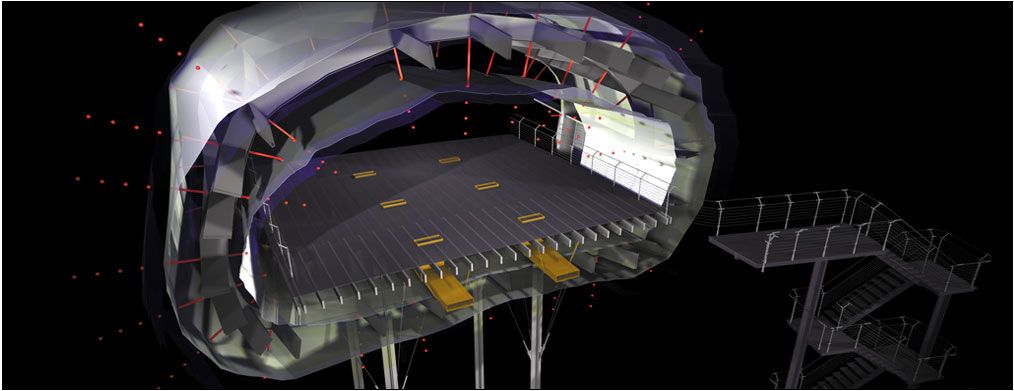Responsive architecture is a transformative approach that goes beyond the static nature of traditional buildings, adapting and evolving in response to the ever-changing environment it inhabits. It embraces adaptability and flexibility, reacting to factors both tangible and intangible, including climate, surroundings, user behavior, and even its own internal dynamics.
At the core of responsive architecture lies the concept of responding to stimuli, where various triggers prompt the structure to adapt and optimize its performance. These stimuli encompass a wide spectrum, from climatic conditions to user activities and the intended function of the building. In today's architectural landscape, responsiveness is integrated at different levels of design, influencing everything from the building's skin and interior spaces to art installations and structural integrity. One remarkable example of this concept in action is the HygroSkin pavilion in France, constructed in 2013. This pavilion stands as a testament to the integration of responsiveness into architectural design. The wooden elements used in its construction respond to changes in humidity in the surrounding environment, resulting in a structure that behaves like a living organism, constantly adapting to its surroundings.
The origins of responsive architecture can be traced back to Peter Cook's visionary concept of 'The Walking City' in the early 1960s. However, it wasn't until the late 1960s that Nicholas Negroponte coined the term 'responsive architecture.' At that time, these ideas were considered avant-garde, but today they have become essential explorations in the realm of architecture. Responsive architecture offers a multitude of benefits, ranging from environmental sustainability to reflecting the technological and cultural zeitgeist of its era. When thoughtfully designed, responsive buildings can also mirror their inhabitants' cultural values and behaviors. Moreover, they provide an opportunity to explore the intricate relationship between space and people, often referred to as 'the poetics of space.' This exploration hinges on an interactive design approach that takes into account the needs and activities of the user group, as well as their responses to design interventions. One compelling example of responsive architecture enhancing user experiences is found in the permanent installation by Electroland at Indianapolis Airport. Here, the fusion of sound and light created a design that resonated with human dynamics. A pedestrian bridge with responsive elements generated an engaging and interactive user experience, showcasing the potential of responsive architecture to shape the way we interact with spaces.

As a more exploratory example of responsive architecture, Papilion, exhibited in ARS Electronica in 2017, utilizes soft robotics technology to create an environmentally adaptive structure. The dome's surface undergoes shape changes through the activation of wing-like units driven by temperature conditions, imparting a sensation akin to the building's rhythmic breathing. This concept diverges from traditional, rigid architectural elements, as it fosters an interactive relationship with the environment, facilitating the integration of light, moisture, and sound. The modular design of the wing-like units allows for easy replacement or expansion, while the potential for cost-effective production of individual units through 3D printing technology highlights the project's versatility.

Beyond aesthetics and user experiences, responsive architecture has the power to influence our psychological well-being. Factors like color, audio-visual effects, textures, and lighting within a space can subtly shape our psychology. Moreover, the environment we inhabit, including the architecture we interact with, plays a crucial role in our overall well-being. This evolving paradigm of well-being encompasses not only physical health but also psychological well-being, driving the need for architecture to contribute positively to our mental states. Responsive architecture has the potential to nurture psychological well-being by understanding and responding to neural sensations. Imagine an architectural design that soothes and supports individuals during difficult times, serving as a comforting friend. This vision is within reach through responsive architecture, which acts as a tool to enhance psychological well-being, provided architects consciously address this aspect of design.
Responsive architecture represents a paradigm shift in how we approach the built environment. It adapts to the dynamic nature of our world, responding to a multitude of stimuli and offering benefits ranging from sustainability to improved user experiences and psychological well-being. As we continue to push the boundaries of architectural design, the potential of responsive architecture to shape a better, more adaptable, and emotionally supportive world becomes increasingly apparent. It is up to architects to embrace this consciousness and harness the power of responsive architecture to create a brighter future for all.





